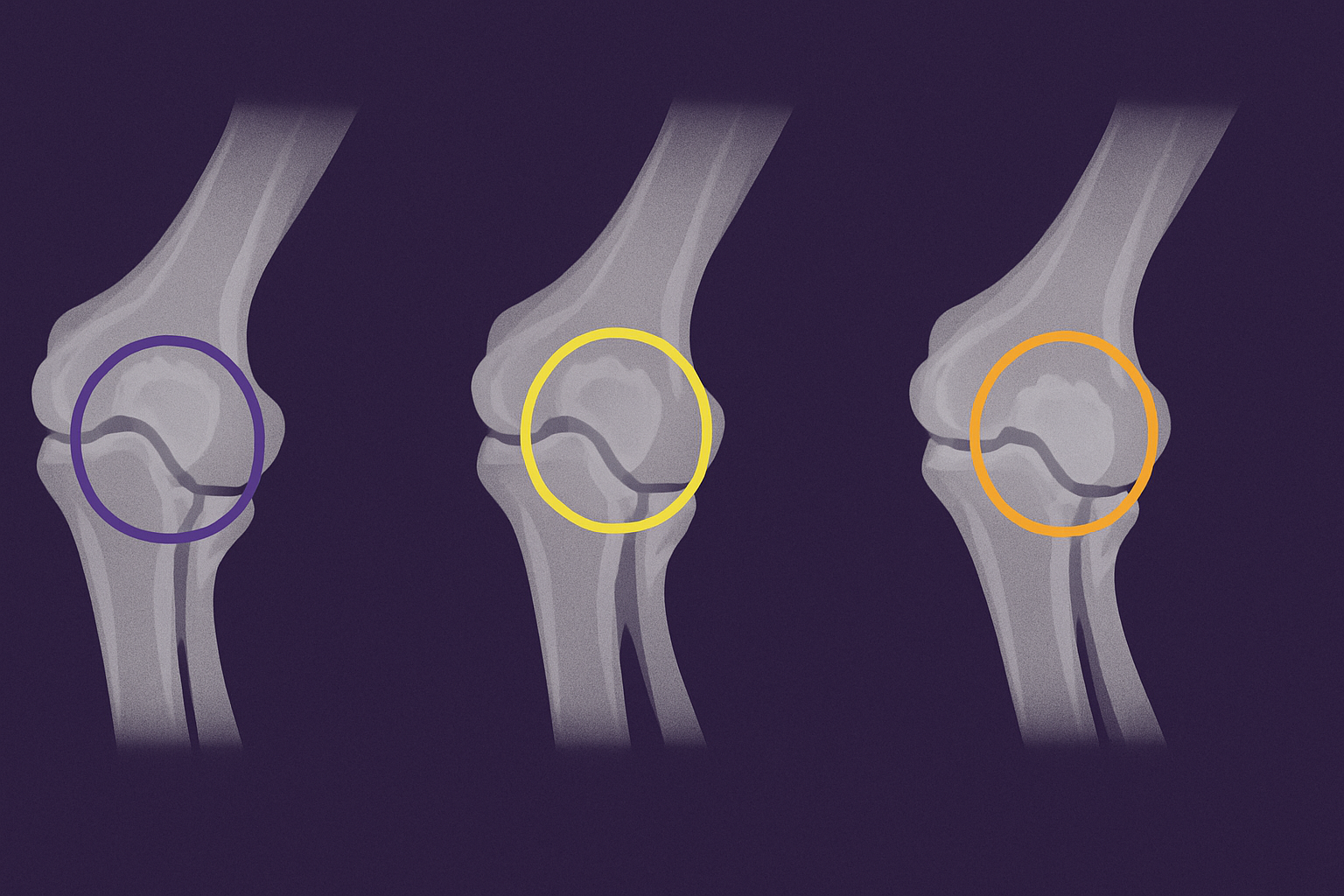NEWS
Australian National Kennel Council Scoring System
NEWS
Australian National Kennel Council Scoring System

Hip Scoring
Open to dogs at least 12 months of age, and is evaluated using a single radiographic view of the pelvis in extension.
There are 9 criteria's to be evaluated, with scores between 0-6 allocated for each, except for the caudal acetabular edge which is scored out of 5.
The scores for the right and left are added together to give a total score. An individual hip score of over 8 or above 3 in any one category is an indication of being unsuitable for breeding though often doesn’t affect the dog themselves at all.
When looking at hip scores ideally you want them as close to 0 as possible and even on both hips for instance while not ideal I’d prefer a dog with 6:6 hips over one that had 8:1 because unless you raised them and know of a previous injury that caused the higher score the hips are very unbalanced and could cause issues later in life.
It is recommended that dogs are only bred with a score lower than the ‘breed average’
Explanation of Elbow Grades
There are no grades for a radiographically normal elbow. The only grades involved are for abnormal elbows with radiographic changes associated with secondary joint disease.
- Grade I Elbow Dysplasia: Minimal bone change along anconeal process of ulna grade 1 is allowed by the ankc and rarely affects the dog at all.
- Grade II Elbow Dysplasia: Additional bone proliferation along anconeal process and subchondral bone changes is no longer acceptable for the ankc for breeding however I have seen plenty of dogs in both pet and working homes live long productive lives.
- Grade III Elbow Dysplasia: Well developed degenerative joint disease with bone proliferation along anconeal process being greater than. Grade 3 is not acceptable for breeding and usually causes a fair bit of discomfort or pain.
